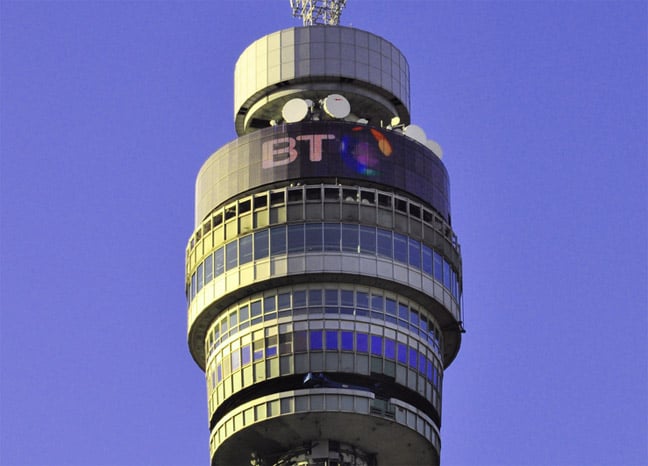BT Hails Hollow-core Fibre Trials As 'critical Advancement' For Secure Communications

BT is claiming bragging rights after completing trials of hollow-core fibre (HCF) cable at its labs at Adastral Park in Suffolk, England.
The new cable – Nested Anti-Resonant Nodeless hollow-core fibre (NANF) to give it its full name – was developed and manufactured by Lumenisity, a Hampshire business set up in 2017 and spun out from work originating at Southampton University. The trials were set up in conjunction with American OpenRAN vendor Mavenir.
Unlike traditional fibre-optic cable, which is made from a solid piece of glass and sends signals using different wavelengths of light to transmit data, Lumenisity's CoreSmart cable is hollow to reduce latency and interference.
BT claims this is yet another small step towards the development of quantum-secure communications after it revealed that researchers had "successfully operated" an "ultra-secure" Quantum Key Distribution (QKD) over a 6km HCF cable.
This is 4km shorter than the 10km proposed in June. When we asked BT about the discrepancy, it told us:
"The sample we received from Lumenisity had been divided into a 6km and 4km length of cable. We tested the QKD system over both the 4km and 6km pieces."
It was also the case that this particular sample of HCF had higher loss than standard single mode fibre. However, University of Southampton have demonstrated that they can also build very low loss Hollow Core Fibre samples, and we do not expect these two beneficial properties (low loss and low scattering) to be mutually exclusive.
BT said of the trials: "Because we placed such a high power channel spectrally close to a very low 'single photon' channel, it was necessary to use extra demultiplexing filter stages, otherwise the effect of filter leakage would have made it impossible to show that the rates of inter-wavelength scattering were indeed insignificant within the HCF.
"The extra filters added to the loss of the link and used up some of the loss budget (i.e. the maximum loss that would provide good performance for the particular QKD system we were trialling)."
The trials, reported by El Reg earlier this year, used the Lumenisity cable as part of broader research to address the need for high-speed transactions and bandwidth increases that could be developed for applications such as Data Centre Interconnects (DCIs), Edge, and 5G xHaul.
- BT says it's trading in line with expectations as revenue slides and pre-tax profit shrinks
- BT tries to crack cyber crime, grabs stake in Safe Security
- BT and Communication Workers Union draw up 'principles' to guide future planning on pay and redundancies
- UK's BT starts trials of new hollow-core optical fibre networks
In a statement, Professor Andrew Lord, BT's Head of Optical Network Research, said the trial will play an "important role in future communications systems globally."
"We've proven a range of benefits that can be realised by deploying hollow-core fibre for quantum-secure communication," he added. "Hollow-core fibre's low latency and ability to send QKD over a single fibre with other signals is a critical advancement for the future of secure communications."
The issue of QKD technology has started to generate an increasing number of headlines as people try to figure out whether QKD really can live up to its "unhackable, uncrackable or unbreakable" label. Earlier this month, news website IT World Canada reported that Ottawa-based security outfit Quantropi had successfully tested its QKD technology over long distances on the internet ahead of a commercial product launch later this year.
Around the time BT and Lumenisity started their trials, Space.com reported that UK-based startup Arqit was two years away from using satellites to roll out QKD technology.
Paolo Pescatore, analyst at PP Foresight, reckoned today's announcement represents a "key step in identifying new technologies that will form the foundation of next-generation networks."
Touching on the broader implications for such developments – particularly when it comes to protecting your assets – he told us: "No company is immune to scrutiny which should be enforced to ensure security and privacy is maintained. Ultimately, security is paramount in a world where networks are becoming software-driven and prone to attacks." ®
From Chip War To Cloud War: The Next Frontier In Global Tech Competition
The global chip war, characterized by intense competition among nations and corporations for supremacy in semiconductor ... Read more
The High Stakes Of Tech Regulation: Security Risks And Market Dynamics
The influence of tech giants in the global economy continues to grow, raising crucial questions about how to balance sec... Read more
The Tyranny Of Instagram Interiors: Why It's Time To Break Free From Algorithm-Driven Aesthetics
Instagram has become a dominant force in shaping interior design trends, offering a seemingly endless stream of inspirat... Read more
The Data Crunch In AI: Strategies For Sustainability
Exploring solutions to the imminent exhaustion of internet data for AI training.As the artificial intelligence (AI) indu... Read more
Google Abandons Four-Year Effort To Remove Cookies From Chrome Browser
After four years of dedicated effort, Google has decided to abandon its plan to remove third-party cookies from its Chro... Read more
LinkedIn Embraces AI And Gamification To Drive User Engagement And Revenue
In an effort to tackle slowing revenue growth and enhance user engagement, LinkedIn is turning to artificial intelligenc... Read more

